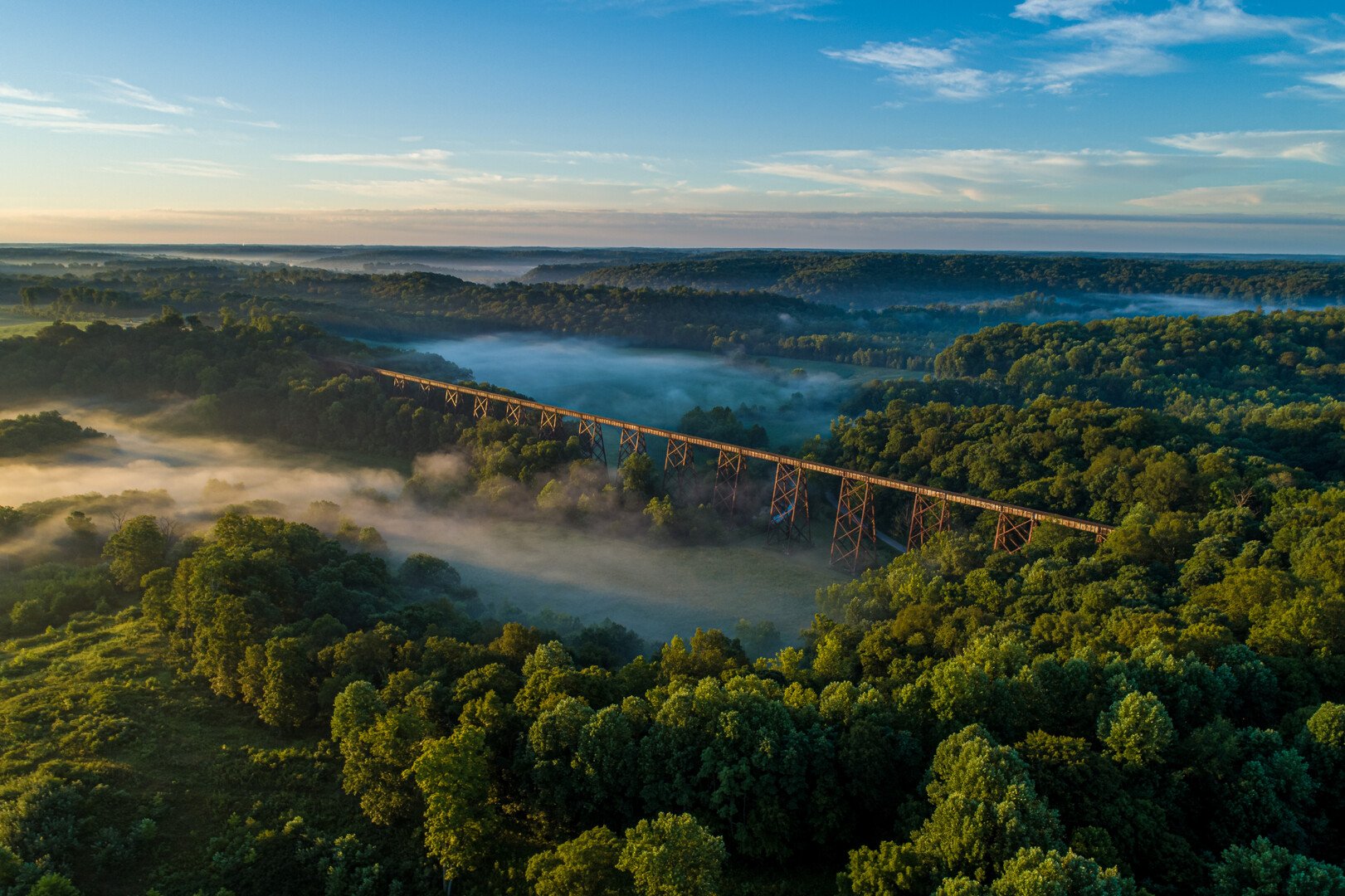
Best Documentary Feature
WINNER (2023)
Liminal: Indiana in the Anthropocene
Directed by Zach Schrank (U.S.)
Interview with Zach Schrank
Liminal: Indiana in the Anthropocene is a meditative aerial film that illustrates our state as a microcosm of this new planetary epoch—shot entirely with a drone.
IAG: Walk me through the thought process behind shooting a film entirely via drone?
ZS: Creating a film entirely shot from a drone stemmed from our desire to offer viewers a unique and meditative experience of the Anthropocene. The Anthropocene, as described by Amitav Ghosh, demands us to 'think about images' due to its vastness (or as Timothy Morton would say, as a Hyperobject) and the challenge of perceiving planetary shifts. Being literally grounded in our daily experiences, it becomes difficult to comprehend the profound impact of human activities on a global scale.
As a filmmaker and lifelong Hoosier, I aimed to convey the surreal quality of hovering over familiar landscapes but presenting them in an unfamiliar light. The drone's aerial perspective allows us to visualize the large-scale consequences of human actions without pinpointing specific individuals. This deliberate choice creates a meditative, rather than didactic, atmosphere, aligning with our goal to convey abstract ideas through art, imagery, and emotional music.
The drone's eye view not only enhances the visual storytelling but also provides a fresh and captivating way for audiences to connect with the Anthropocene. Through this approach, we invite viewers to contemplate the profound implications of our collective actions without prescribing a singular narrative, fostering a deeper and more introspective viewing experience.
IAG: Purely technical question: what kind of drone did you use? I assume you were the drone operator?
ZS: The cinematographer, Aaron Yoder, is an FAA-certified drone pilot and used a DJI Phantom. Aaron has an incredible eye and is talented in both photographic and video work with this drone. He owns and runs a company called Indiana Aerials and is involved in numerous technical and creative projects.
IAG: How many sites did you shoot and how long did it take to shoot the whole film?
We selected more than 50 sites for this project and included about 45 different locations for the film. We began in April of 2020 and concluded our visits and video capture 8 months later.
IAG: The soundtrack really compliments the film in a lovely way – it kind of guides the viewer through the experience. Tell me about the music you used and the sound mix.
ZS: I take immense pride in the extraordinary soundscape crafted by Nate Utesch / Metavari for Liminal. Nate, an Indiana-based graphic designer and composer, brought a wealth of experience from re-scoring classics like Fritz Lang’s Metropolis and David Lynch short films with his lush, lively, and haunting electronic soundtracks. His track record in transforming older silent films with updated scores was truly impressive, and it was a clear choice for me to entrust him with the score for Liminal.
Over the course of a 3-year collaboration, I shared edited versions of the film with Nate, fostering an ongoing dialogue about ideas and the interplay of sound with visuals. I granted Nate complete autonomy in building the soundscape, a decision that reflected my deep trust in his talent. Nate's unique approach to composing involved capturing his initial gut reactions to scenes, forming the foundation of the tracks. This process, as he describes it, introduced a new character to the film, guiding viewers through the emotional journey of encountering both hideous and beautiful imagery.
What sets Nate's work apart is its transformative effect on the film's structure. The chapters and sections of Liminal organically function as an album, with 3-5 minute segments seamlessly flowing together to create a 55-minute opus. This collaborative effort not only brings the visuals to life but also elevates the entire viewing experience, creating an immersive and emotionally resonant journey for the audience.
IAG: Are you currently working on another project?
ZS: While I'm not actively working on another film at the moment, I'm genuinely excited about the prospect of diving into a new project down the road. Over the last four years, I've had the privilege of producing two films, both of which evolved as ways to connect my background as a sociology professor at Indiana University South Bend with visual storytelling. It's been an exhilarating journey, exploring nontraditional formats to share my ideas and scholarship.
As for my next venture, I haven't settled on a specific project yet. However, the intersection of academic topics and visual media continues to inspire me. I see filmmaking as a dynamic avenue to convey complex concepts in accessible ways. The creative process is a journey, and while I don't have a new project in mind just yet, I look forward to exploring themes and ideas that resonate with both my academic background and the world of visual storytelling.
IAG: Last but not least, what are three films that have really inspired you?
ZS: The three films that have most inspired me in the creation of my two previous film projects are
Anthropocene: The Human Epoch (2018) by Edward Burtynsky
Samsara (2011) by Ron Fricke
Monrovia, Indiana (2018) by Frederick Wiseman.
